Everyone’s saying it… video is the future of content marketing!
But is it really?
Similar to you, I noticed that trend over a year ago, and I decided to listen to everyone who told me to focus on videos instead of just text-based content.
But, as you know, opinions don’t really matter in marketing. If the data shows something is working you should do more of it. And if the data shows the opposite, then you need to reconsider what you are doing.
So, was YouTube really worth it for me?
Neil, you’re on YouTube?
If you haven’t already seen my YouTube videos, you can check them out here (they are the same videos I also put on my blog).
And if you have seen my videos, you’ll notice that I have a ton of them. I started posting on YouTube a bit more than a year and a half ago and have already uploaded 347 videos so far.
That’s a lot of content!
The videos all vary in length. I have videos that are as short as 2 minutes, and I have others that are over 30 minutes.
The topics of video content also vary from covering strategy to tactics to answering your questions to even sharing tidbits from my personal life.
I’ve even shared some of my speeches on YouTube as well.
So, is YouTube worth it? Well, before I get into that, let me share some of my stats.
My YouTube channel
Since inception, my YouTube channel has generated 7,627,060 views.
I know the above screenshot shows I’ve been a member of YouTube since August 18, 2011, but I uploaded my first real video on May 11, 2017… and it was about generating more Twitter traffic.
Before that period, I did upload 2 other videos, but they were uploaded for ad purposes. I was using them to drive registrations to a webinar (which didn’t work as well as I had hoped).
Although my total YouTube view count is at 7.6 million, on a monthly basis my view count ranges between 600,000 to 700,000 organic views.
Over the past 30 days, I have generated 724,464 views, which resulted in 2,003,272 minutes of watch time.
To give you some perspective, it would take you roughly 3.8 years to watch over 2 million minutes worth of video. And that’s assuming you’re watching for 24 hours each day and not taking breaks.
That’s a lot of watch time!
And here is an overview of how I generated those views.
As you can see, the majority of my YouTube views comes from “search.”
That means people are searching on YouTube. After that, the suggested and browse are driving a large portion of the views. And then it is external, which are the views I am driving from NeilPatel.com.
It’s kind of crazy how I am driving 101,683 views a month just from my own site.
If you are creating funny videos, news-oriented videos, lifestyle videos, or documentary style videos like Gary V., the majority of your YouTube traffic will come from “suggested” and “browse” in which your videos are going to be recommended a lot in the sidebar of YouTube.
On the other hand, if the majority of your content is educational, kind of like mine, you’ll get the majority of your traffic from YouTube search.
What’s YouTube search like?
No matter what kind of videos you create, you can always generate traffic from YouTube search, similar to how I am.
The amount of traffic just varies on the type of videos you create… educational videos tend to generate the most from YouTube search.
Let’s dive into my search traffic:
As you can see, I rank for terms like SEO, digital marketing, social media marketing, etc.
But the second most popular term I’m generating traffic for is my name, Neil Patel.
And no, it’s not because I have built up a brand in the marketing space. It’s because I have so many videos on YouTube, I have organically started to build a brand on YouTube.
As you can see, I only generated 91 views from people searching for my name in May 2017 (that’s when I uploaded my first video). And now I can generate roughly 5,500 to 6,000 views per month just from that one search term alone.
All I did to grow my brand queries was to upload more content that I felt my target audience wanted to watch.
Overall, YouTube search traffic is high-quality traffic, and it’s much easier to rank and generate those views than on traditional Google search. Best of all, you can rank well on YouTube within a matter of days… even hours!
You heard me right, you can rank well on YouTube in a matter of days.
If you have a brand new profile and you are just starting to upload videos, you may not rank as high as you want right away, but you should see results fairly quickly and over time (like weeks and months, not years) you can easily climb to the top.
Remember, YouTube isn’t competitive like Google and their algorithm is different. If you want the most traffic, you just have to follow these 26 steps.
It sounds like a lot, but it isn’t. Most of them are short and easy to implement.
Whether you follow each of those 26 steps or not, make sure you at least follow the 6 principles below as they make the biggest impact:
- Push hard in the first 24 hours – Unlike traditional SEO, videos that perform well in the first 24 hours tend to do well for the life of the video. If you have an email list or a push notification list, notify them of your YouTube video right when it gets published. If YouTube sees that your video is doing well early on, they will show it to more people and rank it higher.
- Upload text-based transcripts – Although YouTube can somewhat decipher what your video is about, they don’t rely on it. They want you to manually upload a transcription of each video. This will help them determine what your video is about and rank you for the right terms. If you are too lazy to manually transcribe your videos, use Rev. It’s only a dollar per minute.
- Engage with your audience – YouTube is a social website. Content that gets the most engagement performs the best. The obvious thing to do is to tell people to leave a comment, like your videos, and subscribe to your channel. But what works the best is responding to comments. You’ll notice on my videos that I respond to every single comment (or at least I try to).
- Focus on click-through-rate – Similar to Google search, YouTube looks at click-through-rate. From using video thumbnails that pop to creating compelling headlines, you want to get people to click on your video or anyone else’s. If you want a cool looking thumbnail, use Canva.
- Use the right keywords – Similar to Google, if you target the wrong keywords you won’t get much love. You can use VidIQ or if you want a free solution you can use Ubersuggest. When searching for the right keywords, don’t just go after the ones that have the highest traffic, focus on the ones that are also related to your video.
- Keep people on YouTube – YouTube doesn’t want people to leave YouTube. Sending people off to your site early on will hurt you. And if your video isn’t engaging enough, you won’t do well. You can always use the “hot intro” to solve this (watch the video below).
Now that you got the basics down and you’ve seen all of my stats, let’s go over if YouTube is really worth it.
Is YouTube worth it?
I wish I could give you an easy yes or no answer, but that isn’t the case. It really depends what your goals are.
Don’t worry, though, I am not going to give you a lame response… instead, I am going to go over each scenario and tell you if you should go after YouTube (or not) based on your goals.
I will also share my own experience.
Advertising income
It’s not easy to get millions of views per month. Depending on what vertical you are in, some monetize better than others when it comes to ads.
But the one thing that I am certain about is that unless you have tons of views (like well into the millions), the ad income isn’t that great.
According to SocialBlade, I could generate an estimated monthly ad income of $173 to $2,800.
Based on the vertical I’m in, it would be toward the middle to upper end of that number, but still, it’s not that great.
$2,800 a month in ad income wouldn’t even cover my costs to produce and edit the videos I put out on a monthly basis.
So, if you are looking to monetize purely through YouTube ads, I wouldn’t recommend it. It’s not that lucrative unless you can keep your production costs down and you are in a category where you can get millions of views each month.
Sponsorship deals
I know there are famous YouTube stars who make a killing off of sponsorships and endorsement deals. If you are looking to make money from YouTube in this fashion, I wouldn’t count on it. It’s tough, and unless you have generated millions of views each month, you probably won’t get any sponsorships.
Selling products
Whether it is informational products or physical products, YouTube works extremely well.
Based on the data I have from other YouTubers, I would generate around $35,000 a month from YouTube on the low end and $50,000 on the higher end if I pushed people to a webinar and then sold a $997 informational product.
That’s not too shabby.
I don’t do this with my YouTube channel, but it works well.
My buddy Adam does this with his YouTube profile and kills it. He makes a generous 6 figures a year just from promoting informational products from his YouTube videos. He typically sells his products for a few hundred dollars as he is in the consumer space.
I know Tai Lopez does well from this strategy too and so do 20 or so other marketers that I personally know.
In other words, if you want to leverage YouTube to sell products, you should consider doing so. It’s not too competitive to generate the traffic and there is a ton of money for each visitor you attract.
Building a brand
This is what I primarily use YouTube for.
And for this purpose, it has worked well for me. I get countless emails from people telling me that they found me on YouTube or how they love the content I am producing.
For me, it’s not an ego thing, but I want to build a bigger brand. The bigger my brand, the easier it is for my agency to close consulting deals.
Assuming you put out good video content, you’ll find that people will subscribe to your channel, follow you, engage with you, and get to know you better.
If you are selling anything in the future, having this extra brand exposure doesn’t hurt.
If your goal is to build a personal brand, YouTube is great. It doesn’t help as much with corporate brands, but the investment is well worth it from a personal branding perspective.
If you are starting out from scratch (not just on YouTube but in general), I would recommend you focus on a corporate brand instead (YouTube won’t be as effective here), but if you are knee deep in it like I am, just keep pushing forward on your personal brand.
So, for personal brand building, YouTube is worth it. For corporate brand building, not so much.
From YouTube alone, the extra brand exposure has helped my agency close a bit more than $320,000 in revenue (not profit) that I know for sure as the clients told me that they found me on YouTube first.
Lead generation
Here’s where I have generated my biggest ROI… consulting leads. Although I don’t directly collect leads from YouTube, a lot of my clients have seen my YouTube videos.
2 of my clients first found me on YouTube (hence the $320,000 figure above), and countless more have seen my YouTube videos.
If you want to collect leads, YouTube is a great channel. I just wouldn’t collect leads from day 1. First focus on building your audience and then drive people to a landing page after 5 or 6 months of being on YouTube.
The reason for the delay in collecting leads is that it will help you build up your channel authority, so once you do drive people away from YouTube, you will be able to maintain your traffic versus seeing a drop.
The cool part about lead generation is that it works well for both B2B and B2C. With B2B, you will collect fewer leads, but each one will be worth more. With B2C, you will generate more leads, but each one will be worth less.
B2B vs B2C
Speaking of B2B and B2C, YouTube works well for both spaces. It doesn’t matter what industry you are in, YouTube will generally work.
I know I mentioned above that YouTube doesn’t work as well with corporate brands as it does with personal ones, but that doesn’t mean YouTube won’t work. It just means personal brands see a better result.
Conclusion
Overall, YouTube is worth it. You just have to find the right monetization strategy for yourself.
Some people, like my buddy Adam, use YouTube to sell info products while also monetizing through ads.
Ads don’t make him as much money, but when you add up everything together the revenue number is nice. And you will probably be in a similar boat in which you’ll make money from YouTube in multiple ways.
For example, I use YouTube to build a brand and collect leads.
The last piece of advice I have for you is to use videos on multiple platforms. This will drastically increase your return on your investment.
With me, I upload videos to Facebook, YouTube, and LinkedIn. Everyone talks about YouTube (even me), but I’ve done better from uploading videos on LinkedIn from a revenue standpoint than YouTube.
It’s not because LinkedIn is more popular, it’s just that they are more generous with giving you more video views than YouTube because their algorithm currently heavily favors video content.
So, are you going to jump on the YouTube bandwagon?

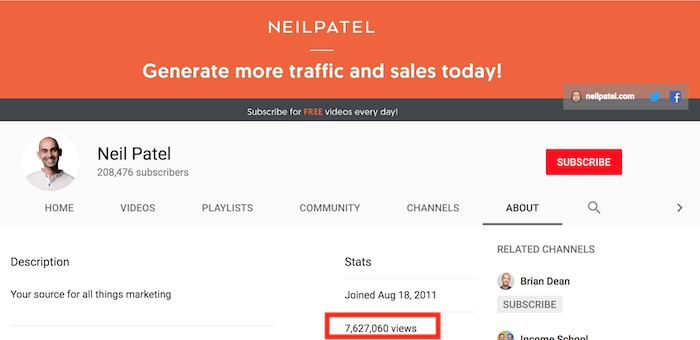
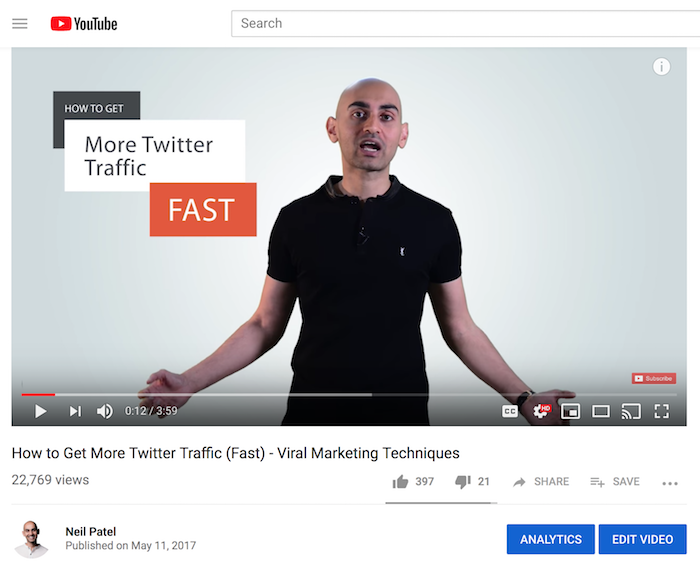
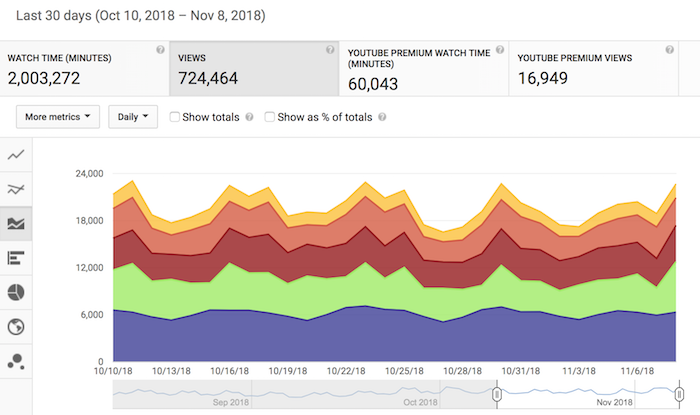
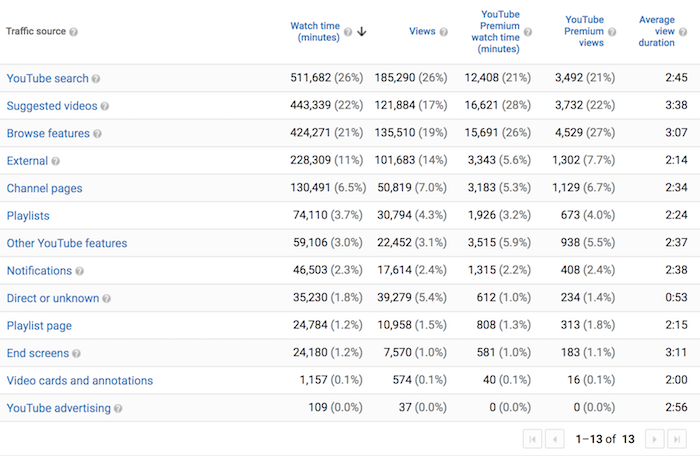
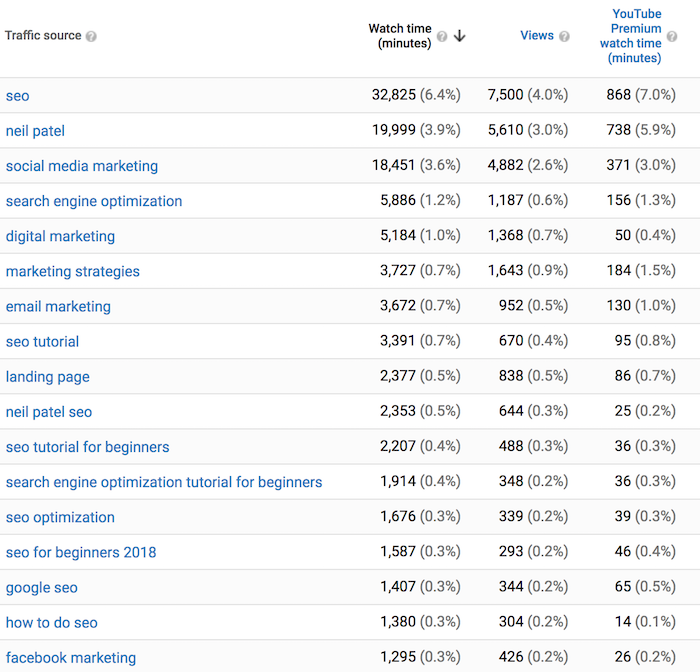


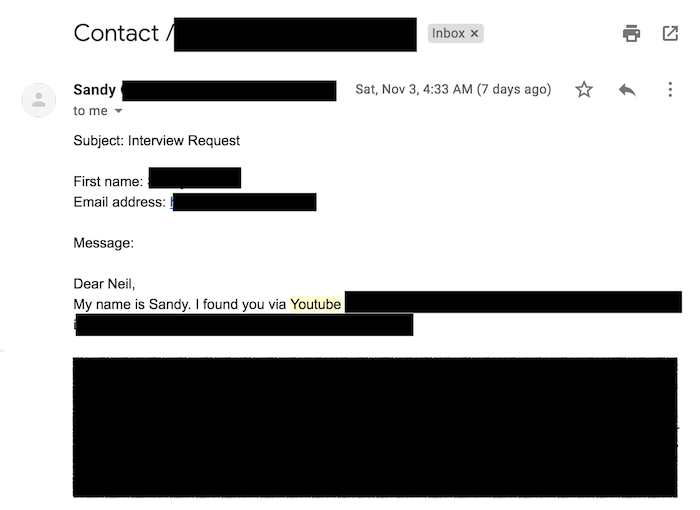
Comments (94)